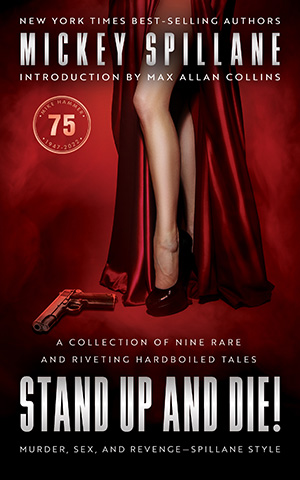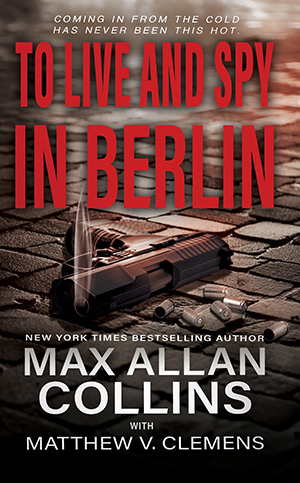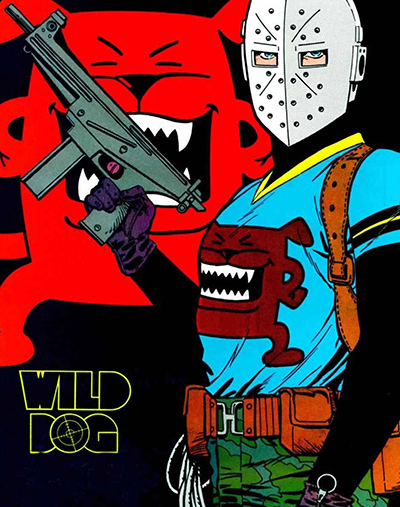My band Crusin’ played its second gig of what will be a short season (one more for sure, maybe two) and it went well. A nice crowd joined us on an upper floor of the local library (!) for the Second Sunday Concert series. We delivered two eclectic sets and the audience seemed to love it, and really responded to our off-the-cuff, often tasteless jokes. And son Nate helped us load in and out – thanks, son!

Crusin’ — Second Sunday Concert Series, Muscatine.

M.A.C. performing with Crusin’, Second Sunday Concert Series
Somebody has unearthed an early (possibly first?) Seduction of the Innocent gig at San Diego Con in 1988. Worth a look. Miguel on drums. This is before Chris Christensen joined up and shared drumming duty with Miggie and guitar duty with Bill Mumy.
Barb and I went to the Happy Together Tour concert in Cedar Rapids, Iowa, at the restored and beautiful Paramount Theater. About half the audience (including us) wore masks. The older demographic meant most were vaccinated, but this was our first venture into a concert, and while we had a blast, I think the vaccination rate will have to go up before we do so again.
The Cowsills – a band I had no respect for or interest in back in the day – were the best act, hands down, vocally, instrumentally, with great showmanship. They opened, which was wise, as it got the crowd whipped up right off the bat. Everybody was good, though a couple of the acts hid the fact that no (or very few) original members were part of the INSERT NAME OF BAND HERE. Two of the original Association members made that line-up of three more valid than most, but the Association appearing alone has a full stage of singers and players whereas here they used the backing band everybody did.
But Gary Puckett was charismatic and in a fine voice, and a genuinely impressive stylist. My band the Daybreakers opened for Gary Puckett and the Union Gap on a mini-tour in Iowa in early 1968 (we were promoting “Psychedelic Siren”). Their equipment didn’t arrive by plane as planned and we loaned them ours (equipment, not plane) – they struggled through with our garage band gear and gave us a signed picture.
Would have loved to reminisce with Mr. Puckett. He was essentially the headliner, coming on right before the Turtles wound up the show and getting five songs (not the usual four), with the pre-recorded announcer bringing him on and off. The Turtles are really just a Turtle now, with Mark Volman very funny but not up to singing much and the great, ailing Howard Kaylan (the lead singer) replaced by Ron Dante of the Archies. He did “Sugar Sugar” and the probably mostly diabetic audience lapped it up.
That sounds like a less than glowing review, but it was really a fun, fine show, the backing band excellent, with the hit after hit nature of the beast pulling the nostalgic heart strings. “Cherish” was our song, Barb and mine, and even a stripped-down Association had its way with us.
* * *
A nice surprise came recently when the London Times gave a rave review to the second of the Eliot Ness non-fiction tomes by Collins and Schwartz, in honor of that book appearing in trade paperback. That review appears below (minus an incredible color photo of Kevin Costner as Ness in the DePalma Untouchables film):
Eliot Ness and the Mad Butcher by Max Allan Collins and A Brad Schwartz review — the thrilling history of the torso murderer
One evening in September 1935 two boys playing softball in a run-down area of Cleveland, Ohio, found a young man’s corpse hidden in undergrowth. The body was naked except for a pair of black socks, and bore the marks of torture. Its genitals and head were missing. Decapitation seemed to be the cause of death.
Detectives were perplexed. They were used to seeing mutilated bodies. Yet as one noted, this was usually done “to prevent identification, but almost never to kill. It’s a hell of a job to remove a human head.”
Police later worked out that the dead man was Edward Andrassy, a small-time drug dealer, pornographer and pimp who worked shifts in Cleveland’s City Hospital. And his was not the only body they found that day. Dumped 30ft away was another male corpse, similarly abused. No one ever established who this second man was. But he and Andrassy would come to be known as victims of a serial killer known as the Cleveland Torso Murderer or the Mad Butcher of Kingsbury Run. During the next three years ten more chopped-up cadavers appeared around the city, and the case became notorious across America and as far away as Nazi Germany. It embarrassed Cleveland’s police, who could do nothing to stop it. And it dogged the man in overall charge of the force: the fabled American crime-fighter Eliot Ness.
Ness is one of the most famous names in the annals of American crime-fighting: he was the inspiration for Dick Tracy and the 1950s TV series The Untouchables. The latter was supposedly based on Ness’s exploits in Prohibition-era Chicago, when he helped to build a case against Al Capone’s mob. But it was almost entirely fictitious. So there is much in his life for historians to explore.
Max Allan Collins and A Brad Schwartz are Ness aficionados. Collins has written several novels and a one-man stage show featuring Ness; Schwartz, an academic, has been obsessed since childhood. They collaborated on a previous book, Scarface and the Untouchable, chronicling Ness’s clash with Capone. But when Capone went to jail, Ness was in his late twenties and barely halfway through his life. What, the authors ask, did he do next?
Well, in 1934 Ness moved to Cleveland, to shut down illegal alcohol distilleries. Within a year, however, he was made city safety director, overseeing the police and fire services. He was not a detective (still less an FBI agent). And he seldom carried a gun. Rather, he was a conscientious, stiff-necked stickler for standards in public life, an intellectual, a progressive and an ardent believer in institutional reform.
Ness believed that urban life would be safer and happier if young men were kept out of jail and encouraged to serve their communities. He hated bent police officers and placed his trust in “untouchable” types — like himself — who would not be bribed or bullied by criminals or politicians. He thought officers should be fit, sober and alert. He loved technology and pioneered the use of police cars fitted with two-way radios. He used journalists and ad campaigns to portray his policies in a favourable light. Most of these were radical ideas in the 1930s, and not universally popular. But Ness took police professionalism seriously and saw it as a force for social change. “I want to prove what an honest police force with intelligence and civic pride can do,” he once said.
Sadly, none of this high principle counted for much when there was a crazed killer on the loose. The detectives who worked the Mad Butcher case under Ness may have had car radios, but they did not have access to modern forensics or DNA testing. Moreover, Collins and Schwarz argue, Ness was a rationalist, who believed crime had logical solutions. “The idea of a murderer who killed solely for satisfaction made no sense to him.” When he did try to get progressive, it was a disaster.
Since the Butcher preyed on Cleveland’s shanty towns, Ness sent officers in to round up the “hoboes, transients and homeless” from the slums and set fire to their shacks. Needless to say, victim-blaming on this scale made for poor public policy. For three years the butcher went about his demented business. And he was never caught, although Cleveland police investigated thousands of suspects. In 1939 an immigrant called Frank Dolezal was tortured by sheriffs outside Ness’s jurisdiction into confessing to one murder, and died, supposedly of suicide, in his cell. The other prime suspect, Frank Sweeney, an alcoholic medic and army veteran related to a senior Cleveland politician, was committed to a mental asylum but never brought to justice. After Ness left his post in Cleveland in 1942 Sweeney wrote him cryptic postcards but stopped short of a confession. When Ness died of a heart attack in 1957, after a post-police career of failed business ventures, heavy boozing and spiralling bad luck, the case remained unsolved.
In arranging this slab of Ness biography around the Butcher case, Collins and Schwarz are on slightly thin ice. Today many pious historians turn up their noses at murder narratives that focus on (or glorify) killers and cops, arguing that we should instead elevate the victims. Moreover, in using the salacious horror of the killings as a peg for what is really a much broader chronicle of Ness’s post-Chicago years, the authors give the Butcher somewhat more prominence in Ness’s life than he deserves.
All the same, this is a deeply researched book — the source notes run to more than 100 pages — which reads like a thriller and sheds new light on a poorly understood modern American icon. Crime history doesn’t get a lot better than that.
As much as I am thrilled by this review, I disagree with aspects of it (are you surprised?). First of all, Ness was a detective and man of action. Second, I feel Brad and I make it clear who the Butcher was. In writing a non-fiction book, however, we had to leave it up to the reader to draw that conclusion from the evidence we present. Still, this is sweet UK kudos for a book that was, I’m afraid, woefully ignored in the USA.
The possibility of a Showtime Ness/Capone series is written up here (as you may recall, Scarface and The Untouchable has indeed been optioned by CBS and a Showtime deal made – resist holding your breaths, however, for the show to appear).
* * *
The Wild Dog/Suicide Squad fuss continues to be covered on various comics sites, thankfully ignored largely by the wider media. Many comics fans think the creators of a character should shut up and let subsequent writers do whatever they like.
Okay, the problem here is that Wild Dog is a hero and only a criminal in the sense that Batman originally was and Zorro always was. Re-purposing the character as a right-wing lunatic who led the Jan. 6 Insurrection and took a proud dump on the Speaker of the House’s desk reflects a lazy, disrespectful writer and a quietly contemptuous editorial/publishing staff with zero regard for the original intent of the creators.
The Suicide Squad concept is villains being traded reduced sentences for taking on dangerous missions (The Dirty Dozen). Wild Dog isn’t a villain. And even if you allowed him to be viewed as one and arrested and imprisoned by the Justice System, tying him to the most notorious domestic terrorist act in modern times is a cheap shot I can’t let pass without comment.
Bleeding Cool has done the most coverage and their most recent post at least reprints my views and Terry’s, which is really all I ask. I don’t expect the writer or DC to do anything but ignore us and our wishes. It’s not like they’re headquartered in the Siegel and Shuster Building.
So you may be expecting my reaction to the new Suicide Squad film to be wildly, doggedly negative. Nope. I loved it. It’s over-the-top, beautifully written and directed by James Gunn channeling Quentin Tarantino. Oddly, it appears to be nihilistic but betrays a good heart in the final fifteen minutes. I’m not sure the movie would work without Idris Elba, who really, really needs to be the next James Bond. Also, John Cena is excellent after stinking up the joint in the latest Fast and Furious.
Another movie you might expect me to hate: Jungle Cruise. Nope. Loved that, too. It is also over-the-top, in a different way, and Duane Johnson (come on, this is the Rock, you know it and I know it) is just an actual, no kidding charismatic movie star and there’s nothing to be done about it. Emily Blunt is charming, too. It’s one of those movies that is somehow stupid and smart all at once, and if it veers too heavily into Pirates of the Caribbean mode in the second half, well, they are both Disneyland rides, aren’t they? At least we haven’t been subjected to a It’s a Small World After All flick (my mother used to sing that song to me because she knew it drove me into an absolute rage but would get me out of bed).
But we streamed both movies. As much as the Happy Together Tour pleased us, and how great it was for Crusin’ to appear as part of the Second Sunday Concert series, Barb and I are both getting paranoid about Covid again. We have grandkids we don’t want to infect, and being fully vaccinated doesn’t seem to be enough.
M.A.C.















